Shakir Hassan Al Said (Iraq, 1925-2004)The Martyrdom of Imam Hussein ink on paper in two parts signed and dated, executed in 1955 29 x 22cm eachFootnotesProvenance: Property from the Artist's Estate These drawings are inspired by the folk art of the annual Ashura mourning processions held in Iraq and elsewhere, which commemorate the martyrdom of al-Husayn bin Ali and other members of the Prophet's family in 680 AD on the plains of Karbala, Iraq. The Ashura processions are based on oral traditions of narration and poetry accompanied by a full costume sombre pageant to recount the three-day events of the besieging of al-Husayn's camp and his martyrdom along with 63 of his companions and family members against a large Umayyad army. In his aforementioned 1954 article, Al Said noted the impact of the Ashura tradition on his visual memory and the mixture of emotions of fear and sadness from seeing the character of Shimmir, the villain, in the processions. Al Said then noted that Shimmir, in turn, showed fear and sadness in the Qajari posters that circulated in Iraq during the 1950s; these posters brought to visual form the myths and oral traditions of Shimmir's fate and torture. In the bottom right corner of the Qajar poster, Shimmir is seen seated inside a large cauldron on fire with his mouth open wide, screaming, and a piercing agonising frontal gaze as his scull is cracked open by repeated strikes from a bearded figure standing behind Shimmir holding a baton, with his raised right hand about to land another blow on Shimmir's head. Al Said's line drawing, with his well-established Mesopotamian-Islamic motifs, renders the figures with a modern interpretation of pain and fear in the context of vengeance. In contrast to Shimmir's drawing, the portrait of Ali with his son Abbas is more formal and symbolic to reflect perhaps a counterpart to Shimmir's predicament. The myths of Shimmir's torture mention that Ali and his sons and daughters sit and watch the torture of Shimmir and the other killers of al-Husayn. Abbas (al-Husayn's half-brother) is identified from the distinctive two feathers in his helmet, while Ali (al-Husayn's father) is identified by his two-pronged sword, known as Thulfiqar. - Dr Ahmed Naji Dr Ahmed Naji is an independent researcher and cultural advisor on art in Iraq and the Arab world. He is the author of Under the Palm Trees: Modern Iraqi Art with Mohamed Makiya and Jewad Selim, Rizzoli New York, 2019. (Instagram: ahmednaji_alsaid)
Shakir Hassan Al Said (Iraq, 1925-2004)The Martyrdom of Imam Hussein ink on paper in two parts signed and dated, executed in 1955 29 x 22cm eachFootnotesProvenance: Property from the Artist's Estate These drawings are inspired by the folk art of the annual Ashura mourning processions held in Iraq and elsewhere, which commemorate the martyrdom of al-Husayn bin Ali and other members of the Prophet's family in 680 AD on the plains of Karbala, Iraq. The Ashura processions are based on oral traditions of narration and poetry accompanied by a full costume sombre pageant to recount the three-day events of the besieging of al-Husayn's camp and his martyrdom along with 63 of his companions and family members against a large Umayyad army. In his aforementioned 1954 article, Al Said noted the impact of the Ashura tradition on his visual memory and the mixture of emotions of fear and sadness from seeing the character of Shimmir, the villain, in the processions. Al Said then noted that Shimmir, in turn, showed fear and sadness in the Qajari posters that circulated in Iraq during the 1950s; these posters brought to visual form the myths and oral traditions of Shimmir's fate and torture. In the bottom right corner of the Qajar poster, Shimmir is seen seated inside a large cauldron on fire with his mouth open wide, screaming, and a piercing agonising frontal gaze as his scull is cracked open by repeated strikes from a bearded figure standing behind Shimmir holding a baton, with his raised right hand about to land another blow on Shimmir's head. Al Said's line drawing, with his well-established Mesopotamian-Islamic motifs, renders the figures with a modern interpretation of pain and fear in the context of vengeance. In contrast to Shimmir's drawing, the portrait of Ali with his son Abbas is more formal and symbolic to reflect perhaps a counterpart to Shimmir's predicament. The myths of Shimmir's torture mention that Ali and his sons and daughters sit and watch the torture of Shimmir and the other killers of al-Husayn. Abbas (al-Husayn's half-brother) is identified from the distinctive two feathers in his helmet, while Ali (al-Husayn's father) is identified by his two-pronged sword, known as Thulfiqar. - Dr Ahmed Naji Dr Ahmed Naji is an independent researcher and cultural advisor on art in Iraq and the Arab world. He is the author of Under the Palm Trees: Modern Iraqi Art with Mohamed Makiya and Jewad Selim, Rizzoli New York, 2019. (Instagram: ahmednaji_alsaid)




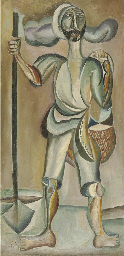
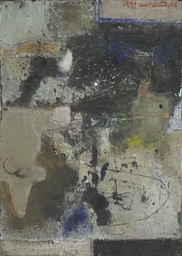
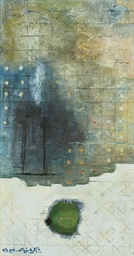
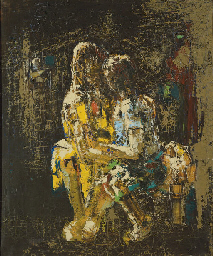



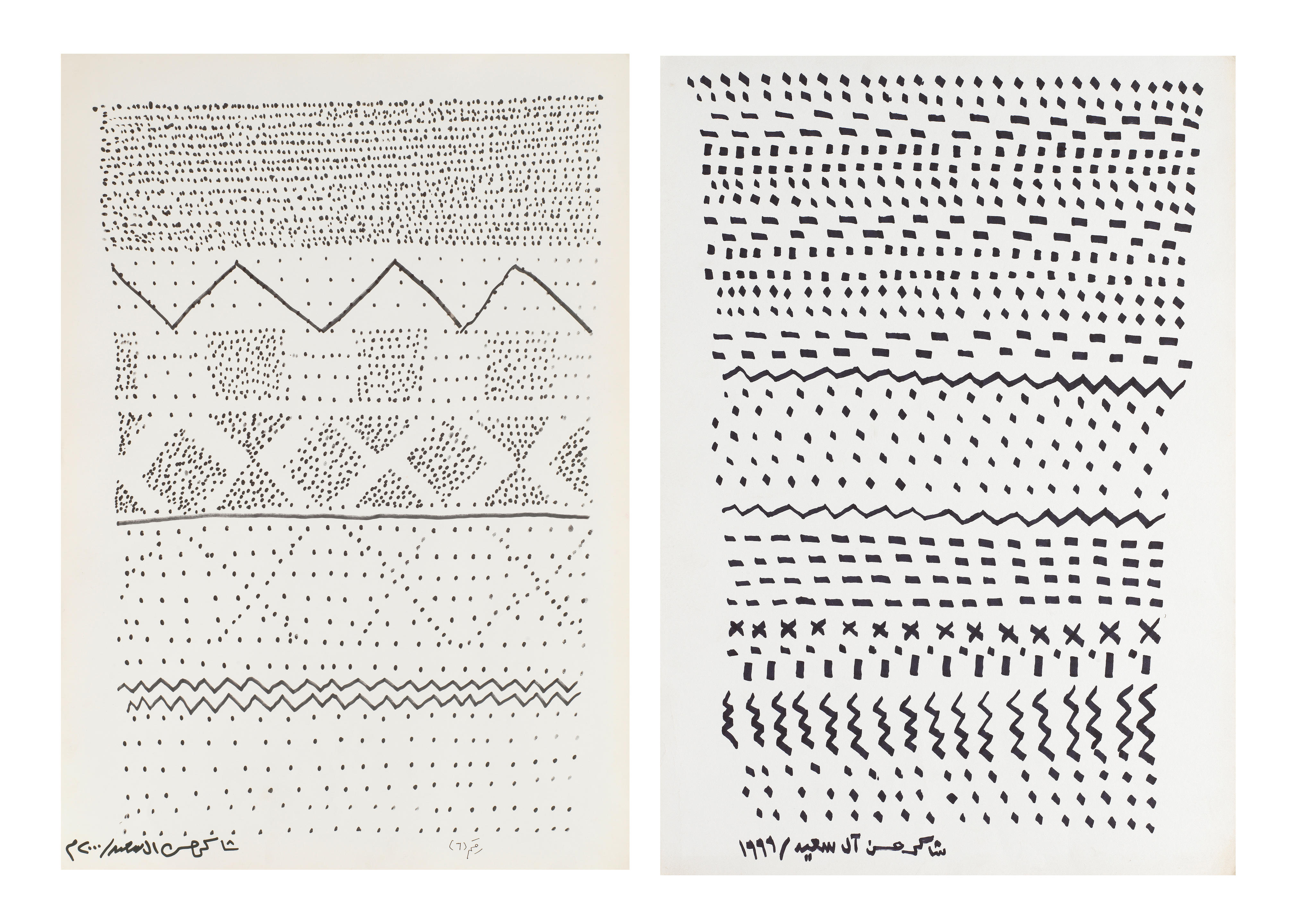


Testen Sie LotSearch und seine Premium-Features 7 Tage - ohne Kosten!
Lassen Sie sich automatisch über neue Objekte in kommenden Auktionen benachrichtigen.
Suchauftrag anlegen